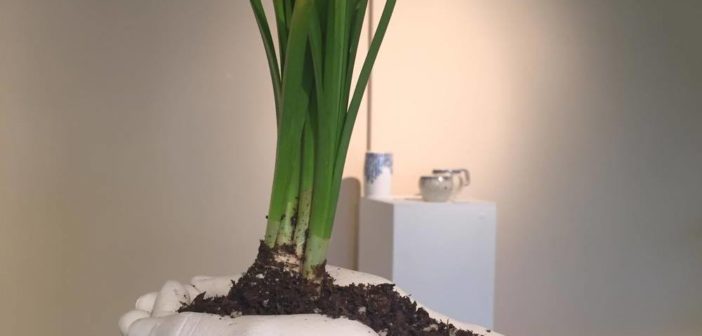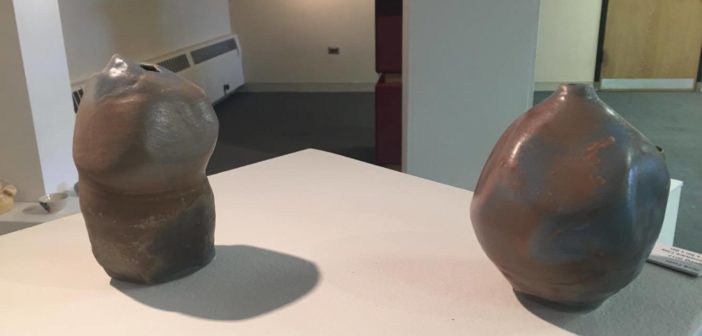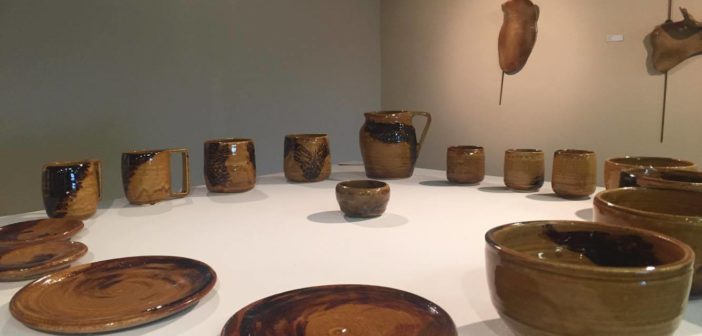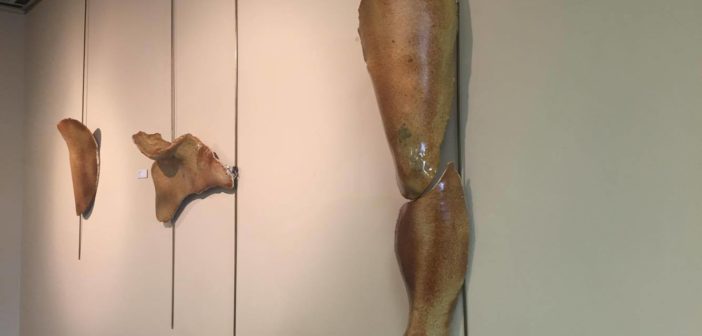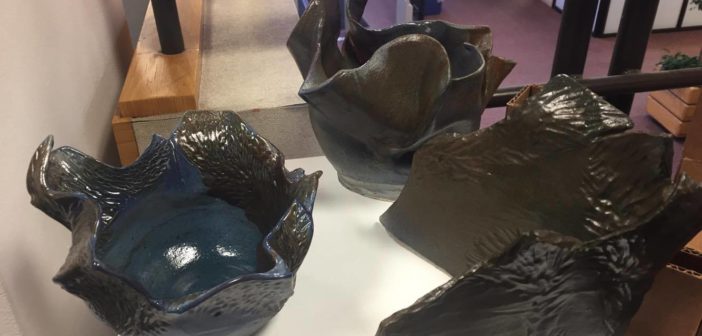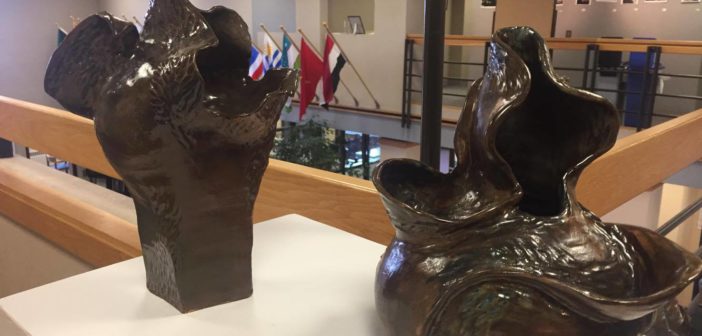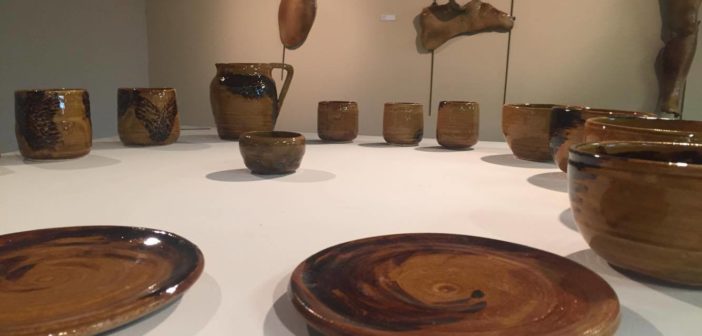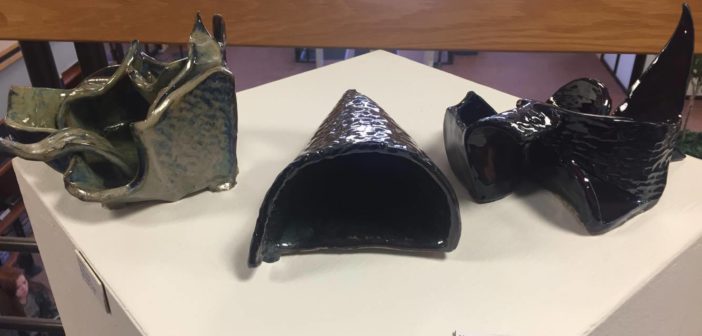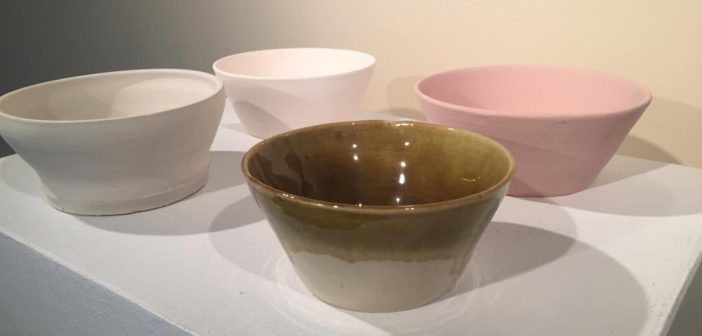Stella Fanega: When did you start doing ceramics?
Kirsten Kleman: I had my first experiences with ceramics while I was still in high school during an introduction class. It wasn’t until I reached North Central that I was able to really gain valuable skills, knowledge, and experience in the studio.
SF: When you’re in the moment of creating something, how does it make you feel?
KK: When I’m working in the studio, I experience something like a runner’s high. I feel focused, confident in my skills, and calm. I detach whatever else is going on in my life and I focus on the details, the feel of the clay, the form I’m working on, what I’ll make next. Before I know it, it’s after midnight and I’ve been in the studio for six hours when it hardly feels like one.
SF: How long did it take you finish all your project?
KK: Generally, ceramics is a time consuming art. From start to finish, any given piece can take anywhere from at least two weeks to two months to get from the clay stage to actual functional or decorative objects. It’s an art that takes a lot of time and dedication to make. The majority of my pieces in the show were each created in about a three-four week time frame with most objects created within the last six months, some dating back to two years.
SF: Did you face any challenges during the process of your work? If so, how did you manage to still succeed?
KK: My biggest challenge as a ceramicist is time. Clay is particular, it forces you to continue revisiting it every two-three days when it is still in the beginning phases. This is difficult at this time of year with so many other things requiring my time and attention. This calls for a lot of late nights in the studio. There are also very practical challenges I’ve faced, particularly with display set up and actually hanging some of my work in the library where there are restrictions as to what hardware you can use. While a solo exhibit offers an artist a lot of freedom, there are also a lot of challenges that come with curating a solo show. I was, start to finish, responsible for how the viewer saw my work, what they read, which can change their perception of the work, and that is a lot of pressure to think about when artists typically only think about creating the piece they are displaying. I couldn’t have done this show without the help of me.
SF: Were you nervous about your opening night? What were your expectations?
KK: I think opening receptions are definitely a cause for nerves for any artist. Particularly for me, a vast majority of the work I do is behind closed doors, and ceramics is an art not a lot of people understand the process behind. I’ve been making a conscious effort to share some of the work I’ve been doing with cool videos and pictures on my Instagram (@kirstenkleman) to have people excited and interested in seeing what I’ve been up to. Even then, people can communicate their excitement but you never know who is actually going to take the time out of their busy lives to physically show up and show support for your art. I also worried that viewers wouldn’t like, or agree with, some of the reasoning behind the work that I do. I make functional objects often referencing floral or botanic forms, adhering to the origins of the material I work with, and I try to tie it back to some of the environmental issues our society is facing. For example, I made a service set of plates, cups and bowls and highlighted its functionality in relation to the amount of disposable service ware found in landfills. This challenges the viewer to make the conscious decision to make the environmentally friendly choice rather than the easy choice. Some viewers may not be into environmental awareness or they may not share the same views on the subject. I was definitely nervous, but I had so many guests come to the show and I received so much positive feedback. A good portion of my show even sold on the first night. This experience by far exceeded my expectations.

